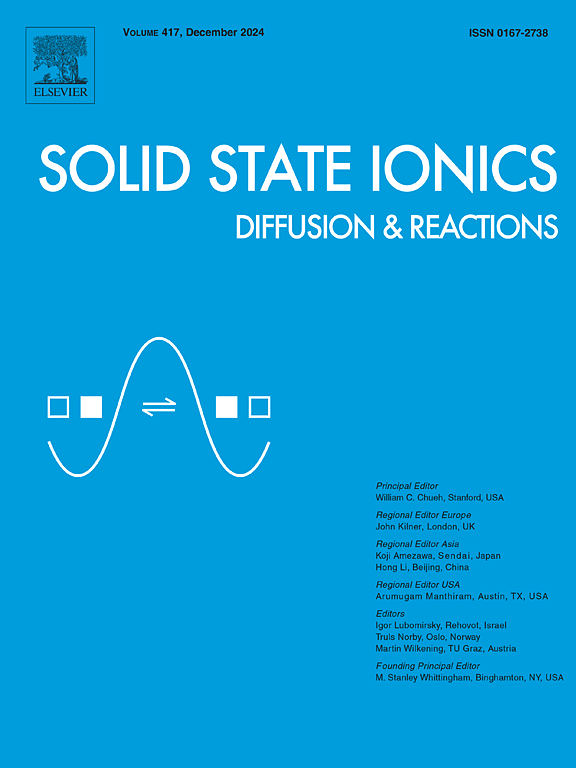石榴石固体电解质:材料设计、微观结构工程和高能密度固态锂电池的途径
IF 3.3
4区 材料科学
Q3 CHEMISTRY, PHYSICAL
引用次数: 0
摘要
石榴石型Li7La3Zr2O12 (LLZO)固体电解质因其优异的离子电导率、广泛的电化学稳定性以及与锂金属的相容性而被确定为高能固态锂电池的潜在候选者。本文对LLZO的结构-性能关系进行了系统的研究,特别关注了晶界工程在提高离子电导率方面的关键作用。评估了包括单/多离子取代和阴离子-阳离子共掺杂在内的先进掺杂策略对稳定立方相和优化锂空位分布的影响。烧结技术和LLZO薄膜制造方法的创新强调了它们对实现高离子电导率和超薄厚度的贡献。此外,还讨论了超薄柔性有机无机复合电解质的设计,以解决与机械脆性和工业化相关的挑战。对离子电导率增强、超薄电解质制造策略和可扩展性挑战的关键评估为llzo基固态电池向高能量密度和工业实用性的发展提供了有见地的参考。本文章由计算机程序翻译,如有差异,请以英文原文为准。
Garnet solid electrolytes: Material design, microstructural engineering, and pathways to high-energy density solid-state lithium batteries
Garnet-type Li7La3Zr2O12 (LLZO) solid electrolytes have been identified as potential candidates for high-energy solid-state lithium batteries due to their distinguished ionic conductivity, wide-ranging electrochemical stability, and compatibility with lithium metal. This review provides a systematic examination of the structure-property relationships of LLZO, with a specific focus on the pivotal role of grain boundary engineering in improving ionic conductivity. Advanced doping strategies, encompassing single/multi-ion substitution and anion-cation co-doping, are evaluated for their impact on stabilizing the cubic phase and optimizing lithium vacancy distribution. Innovations in sintering techniques and LLZO film fabrication methods are emphasized for their contributions to achieving high ionic conductivity and ultrathin thickness. Moreover, the design of ultrathin flexible organic-inorganic composite electrolytes is discussed to tackle challenges associated with mechanical brittleness and industrialization. The critical evaluations of ionic conductivity enhancement, ultrathin electrolyte fabrication strategies, and scalability challenges provide insightful references for the advancement of LLZO-based solid-state batteries toward high energy density and industrial practicality.
求助全文
通过发布文献求助,成功后即可免费获取论文全文。
去求助
来源期刊

Solid State Ionics
物理-物理:凝聚态物理
CiteScore
6.10
自引率
3.10%
发文量
152
审稿时长
58 days
期刊介绍:
This interdisciplinary journal is devoted to the physics, chemistry and materials science of diffusion, mass transport, and reactivity of solids. The major part of each issue is devoted to articles on:
(i) physics and chemistry of defects in solids;
(ii) reactions in and on solids, e.g. intercalation, corrosion, oxidation, sintering;
(iii) ion transport measurements, mechanisms and theory;
(iv) solid state electrochemistry;
(v) ionically-electronically mixed conducting solids.
Related technological applications are also included, provided their characteristics are interpreted in terms of the basic solid state properties.
Review papers and relevant symposium proceedings are welcome.
 求助内容:
求助内容: 应助结果提醒方式:
应助结果提醒方式:


